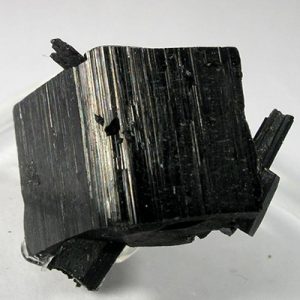Arfvedsonite
Arfvedsonite is a sodium Amphibole that is rich Group whose users are important to rock forming minerals. It’s a mineral that is the uncommon gem. Arfvedsonite is mainly glossy black coloured but can show chatoyancy that is beautiful flashes of blue, green and gold. It is almost always opaque, except in slim slices, so cabochons would be the most gem type that is common.
The greatest localities for finding Arfvedsonite include Mont Saint-Hilaire, Quebec, Canada; the
Ilimaussaq Intrusion, in Southern Greenland; the agpaitic pegmatites of the Kola Peninsula, Russia and Langesundfjord, Norway
| Category: | Inosilicates Amphiboles |
| Chemical Formula: | NaNa2[(Fe2+,Mg)4Fe3+]Si8O22(OH)2 |
| Sodium Iron Magnesium Silicate Hydroxide | |
| Molecular Weight: | 958.89 gm |
| Composition: | Sodium | 7.19 % | Na | 9.70 % | Na2O |
| Iron | 29.12 % | Fe | 29.97 % | FeO / 8.33 % Fe2O3 | |
| Silicon | 23.43 % | Si | 50.13 % | SiO2 | |
| Hydrogen | 0.21 % | H | 1.88 % | H2O | |
| Oxygen | 40.04 % | O | |||
| 100.00 % | 100.00 % | = TOTAL OXIDE |
| Crystallography: | Monoclinic – Prismatic |
| Crystal Habit: | Commonly as elongated prisms, striated and unterminated, to 0.60 m; may be tabular. As prismatic aggregates and radiating fibrous clusters. |
| Twinning: | Simple or lamellar twinning |
| Cleavage: | Perfect on {110} |
| Fracture: | Irregular/Uneven |
| Tenacity: | Brittle |
| Moh’s Hardness: | 5.5 – 6.0 |
| Density: | 3.44 – 3.45 (g/cm3) |
| Luminescence: | None |
| Radioactivity: | Not Radioactive |
| Color: | Black, Bluish Gray, deep Green on thin edges |
| Transparency: | Transparent to Opaque |
| Luster: | Vitreous (glassy); Silky when fibrous |
| Refractive Index: | 1.652 – 1.708 Biaxial ( – ) |
| Birefringence: | 0.009 – 0.014 |
| Dispersion: | Strong; r > v |
| Pleochroism: | Strong, in blue-greens, yellow-browns, or gray-violets. |


